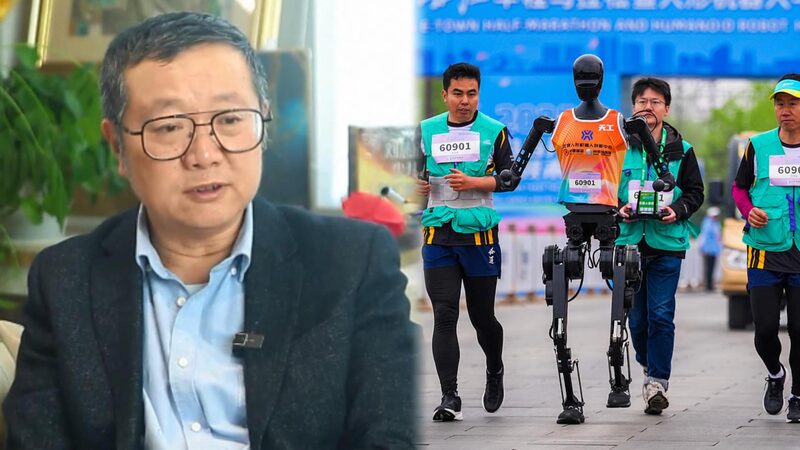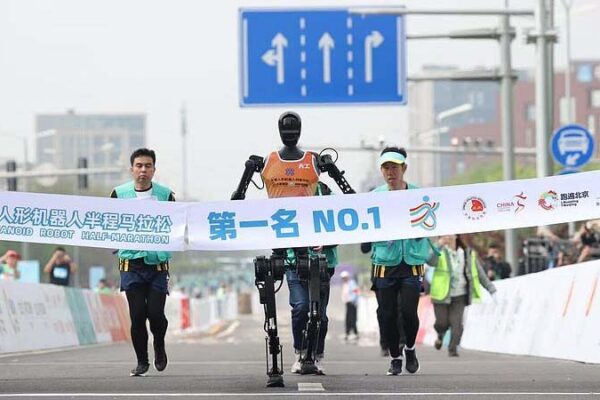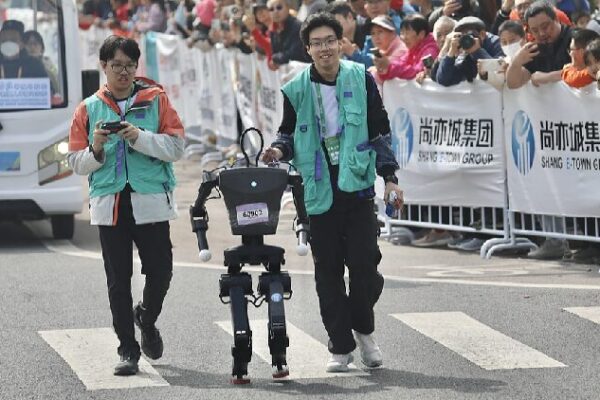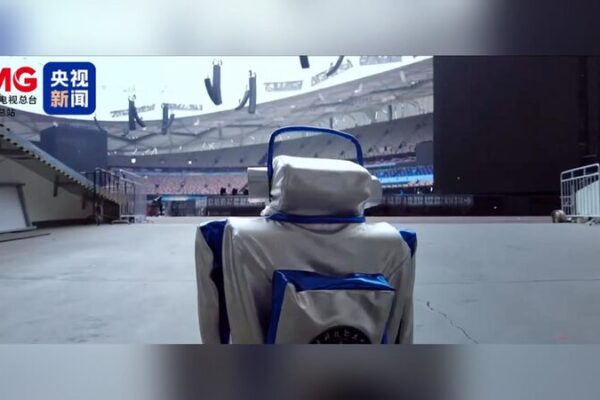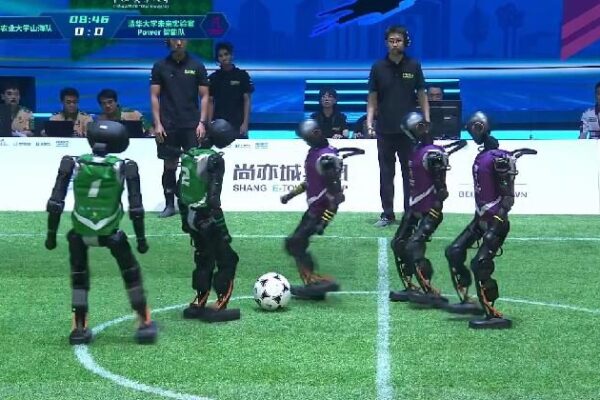Renowned science fiction author Liu Cixin has shared his thoughts on the potential impact of humanoid robots on human society, as the world’s first humanoid robot half-marathon kicked off in Beijing on Saturday.
Liu, best known for his acclaimed novel The Three-Body Problem, believes that while humanoid robots hold vast potential for practical benefits, they could also bring about significant disruptions as the technology advances.
“I think the robot marathon is more of a showcase,” Liu said in an interview ahead of the race. “The robots demonstrate their ability to move in a stable, balanced way while running, which shows the public what robots are capable of today.”
The half-marathon spans over 21 kilometers, requiring participating bipedal robots to execute approximately 250,000 precise joint movements. The event marks a significant milestone in the development of embodied artificial intelligence and humanoid robotics.
Liu pointed out that robots with practical functions—such as caring for the elderly and patients or performing household chores—have significant market potential. “For example, robots that can assist the elderly or care for patients have huge market potential. Household robots that can handle chores are also extremely useful,” he said. “Of course, robots haven’t reached that level yet. But once they do, the market will be enormous, and the impact on daily life will be profound.”
However, he also warned of the potential societal implications if robots become indistinguishable from humans. “The ultimate goal of developing embodied robots may be to create machines that are indistinguishable from humans,” Liu said. “Once that technology is realized, its impact on society could be truly disruptive. If we can no longer tell a robot from a human—whether by intelligence or appearance—the consequences would be hard to imagine, even in science fiction novels.”
The humanoid robot half-marathon in Beijing not only showcases the current capabilities of robotic technology but also highlights the rapid advancements being made. As humanoid robots become more integrated into daily life, Liu’s insights serve as a reminder of both the opportunities and challenges that lie ahead.
Reference(s):
cgtn.com
